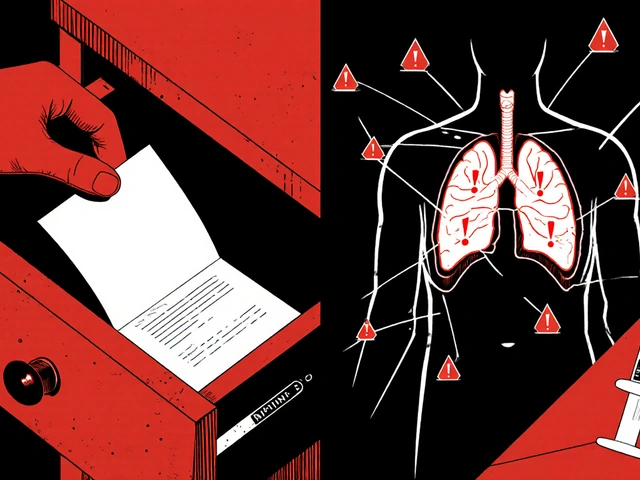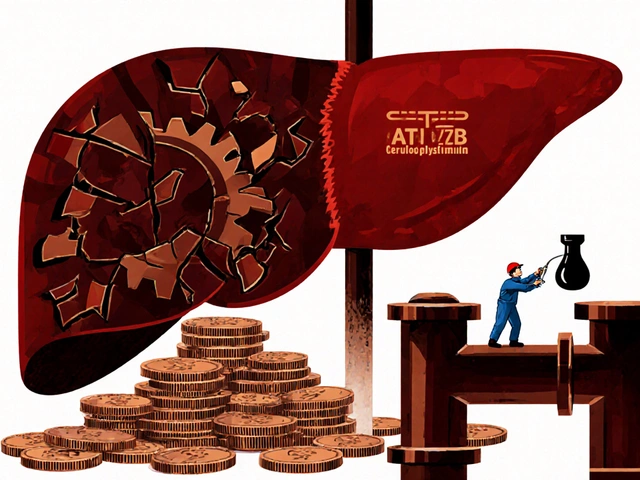ED Medication Comparison Tool
Select Criteria to Compare Medications
Adjust criteria above and click "Find Best Match" to see recommendations.
TL;DR
- Zenegra (sildenafil) works in 30‑45 minutes, lasts up to 5 hours, and is cheaper than brand‑name Viagra.
- Cialis (tadalafil) takes longer to work but can last up to 36 hours, making it ideal for spontaneous plans.
- Levitra (vardenafil) offers a slightly faster onset than Viagra but similar duration.
- Stendra (avanafil) works in as little as 15 minutes with fewer visual side effects.
- Generic sildenafil tablets provide the same effect as Zenegra at the lowest cost.
When it comes to treating erectile dysfunction (ED), Zenegra is a prescription pill that contains the active ingredient sildenafil, the same molecule found in the well‑known brand Viagra. But the market is crowded with alternatives, each promising a different balance of speed, duration, price, and side‑effect profile. This guide breaks down the most common options so you can see which one fits your lifestyle and budget.
What is Zenegra?
Zenegra is a tablet that delivers sildenafil citrate in doses of 25mg, 50mg, or 100mg. Approved for oral use, it belongs to the phosphodiesterase‑5 (PDE‑5) inhibitor class, which relaxes smooth muscle in the penis and increases blood flow after sexual stimulation.
How Zenegra Works
After you swallow a Zenegra tablet, the drug is absorbed into the bloodstream within about 30 minutes. It blocks the PDE‑5 enzyme, preventing the breakdown of cyclic GMP, a molecule that triggers muscle relaxation. The result is an erection that can be maintained for up to five hours, provided you’re sexually aroused.

Major Alternatives on the Market
Below is a quick snapshot of the most frequently prescribed ED medicines. Each entry includes a micro‑data definition for easy reference.
- Viagra is the original brand name for sildenafil, typically sold in 25mg, 50mg, and 100mg tablets.
- Cialis contains tadalafil, a longer‑acting PDE‑5 inhibitor available in 2.5mg, 5mg, 10mg, and 20mg doses.
- Levitra (vardenafil) is offered in 5mg, 10mg, and 20mg tablets and works similarly to sildenafil.
- Stendra (avanafil) is a newer PDE‑5 inhibitor known for its rapid 15‑minute onset.
- Generic Sildenafil provides the same active ingredient as Zenegra and Viagra but at a lower price point.
- Yohimbine is a herbal supplement sometimes used off‑label for ED, though evidence is mixed.
Side‑Effect Profile Comparison
All PDE‑5 inhibitors share common side effects-headache, flushing, nasal congestion, and upset stomach-but the intensity and frequency can differ.
| Drug | Typical Onset | Duration | Common Side Effects | Average Monthly Cost (US$) |
|---|---|---|---|---|
| Zenegra (Sildenafil) | 30‑45min | 4‑5hrs | Headache, flushing, dyspepsia | 30‑45 |
| Viagra (Sildenafil brand) | 30‑60min | 4‑5hrs | Similar to Zenegra, slightly higher visual changes | 40‑55 |
| Cialis (Tadalafil) | 60‑120min | Up to 36hrs | Back pain, muscle aches, headache | 45‑60 |
| Levitra (Vardenafil) | 25‑60min | 4‑5hrs | Headache, flushing, dizziness | 35‑50 |
| Stendra (Avanafil) | 15‑30min | 4‑6hrs | Headache, nasal congestion, mild visual changes | 50‑70 |
| Generic Sildenafil | 30‑45min | 4‑5hrs | Same as Zenegra | 20‑30 |
| Yohimbine (Herbal) | Variable (1‑2hrs) | 2‑3hrs | Increased heart rate, anxiety, headache | 10‑15 |
Which Option Is Right for You?
Choosing an ED medication isn’t a one‑size‑fits‑all decision. Below are some practical scenarios to help you match a drug to your needs.
- Budget‑conscious users: Generic sildenafil (the same ingredient as Zenegra) offers the lowest cost with identical efficacy.
- Spontaneous plans: Cialis’s long window (up to 36hrs) means you don’t have to time the pill as precisely.
- Fastest onset: Stendra can work in as little as 15 minutes, useful if you’re often pressed for time.
- Minimal visual side effects: Zenegra and generic sildenafil tend to cause fewer color‑vision changes than Viagra.
- Combination with other meds: Talk to a doctor if you take nitrates; all PDE‑5 inhibitors can cause dangerous blood‑pressure drops.
- Preference for natural products: Yohimbine is available over the counter but lacks robust clinical backing and can raise heart rate.
Safety Tips and Common Pitfalls
Even though these drugs are widely prescribed, a few safety checkpoints can save you trouble:
- Never mix PDE‑5 inhibitors with nitrate‑containing medications (e.g., nitroglycerin) - the combo can cause a sudden blood‑pressure plunge.
- Start with the lowest effective dose. For Zenegra, many physicians recommend 50mg unless you have liver/kidney issues.
- Take the pill on an empty stomach for quicker absorption. High‑fat meals can delay onset by up to an hour.
- Watch for warning signs: chest pain, prolonged erections (>4hrs), sudden vision loss - seek medical help immediately.
- Consult your doctor if you have uncontrolled hypertension, severe heart disease, or a history of stroke.

Frequently Asked Questions
Is Zenegra the same as Viagra?
Yes. Both contain sildenafil, but Zenegra is often sold as a lower‑price alternative through online pharmacies, while Viagra is the original brand.
How does the price of Zenegra compare to other ED drugs?
Zenegra typically costs between $30‑$45 per month, which is cheaper than brand‑name Viagra and close to generic sildenafil. Cialis and Stendra are usually more expensive.
Can I take Zenegra with alcohol?
Moderate alcohol is generally okay, but heavy drinking can blunt the drug’s effectiveness and increase side‑effects like dizziness.
What if Zenegra doesn’t work for me?
If the standard 50mg dose fails, talk to your doctor. They may increase the dose to 100mg or suggest switching to a different PDE‑5 inhibitor such as Cialis or Stendra.
Are there any natural alternatives that work as well?
Herbal supplements like yohimbine, ginseng, or L‑arginine have mixed results and lack the rigor of prescription meds. They might help mild cases, but most men need a PDE‑5 inhibitor for reliable results.






Zenegra is just a generic rebrand, nothing novel.
September 28Chris Morgan